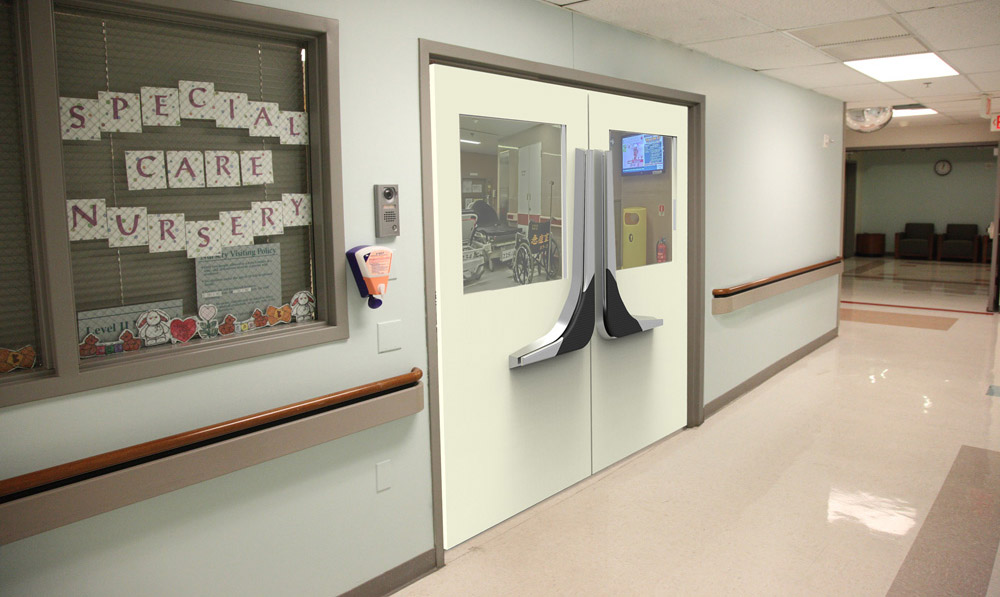Hospital Touch Bar
While researching hospital environments, we noticed several push operated touch bars that had been modified by the staff using material scavenged from the surrounding environment (foam, gauze, tape, etc).
These kinds of modifications indicated to us that the push bars were not currently meeting the needs of their users. We focused on creating a design that would optimize a touch bar for the hospital environment. Our goal was to adapt the modifications the staff had made to the touch bar into a more sanitary form whose design was more deeply informed the needs of its users.
 Our main research methods included observation, situational testing/simulation, and analysis of the major user groups involved in utilizing touch bars within hospital environments.
Our main research methods included observation, situational testing/simulation, and analysis of the major user groups involved in utilizing touch bars within hospital environments.
Additionally, we looked at how patients on stretchers are transported throughout the hospital environment, and used the patterns associated with their movement to better inform our new touch bar design.
The modified shape extends the bar so that the overall function is more accessible to hospital workers, patients, and those transporting gurneys.











